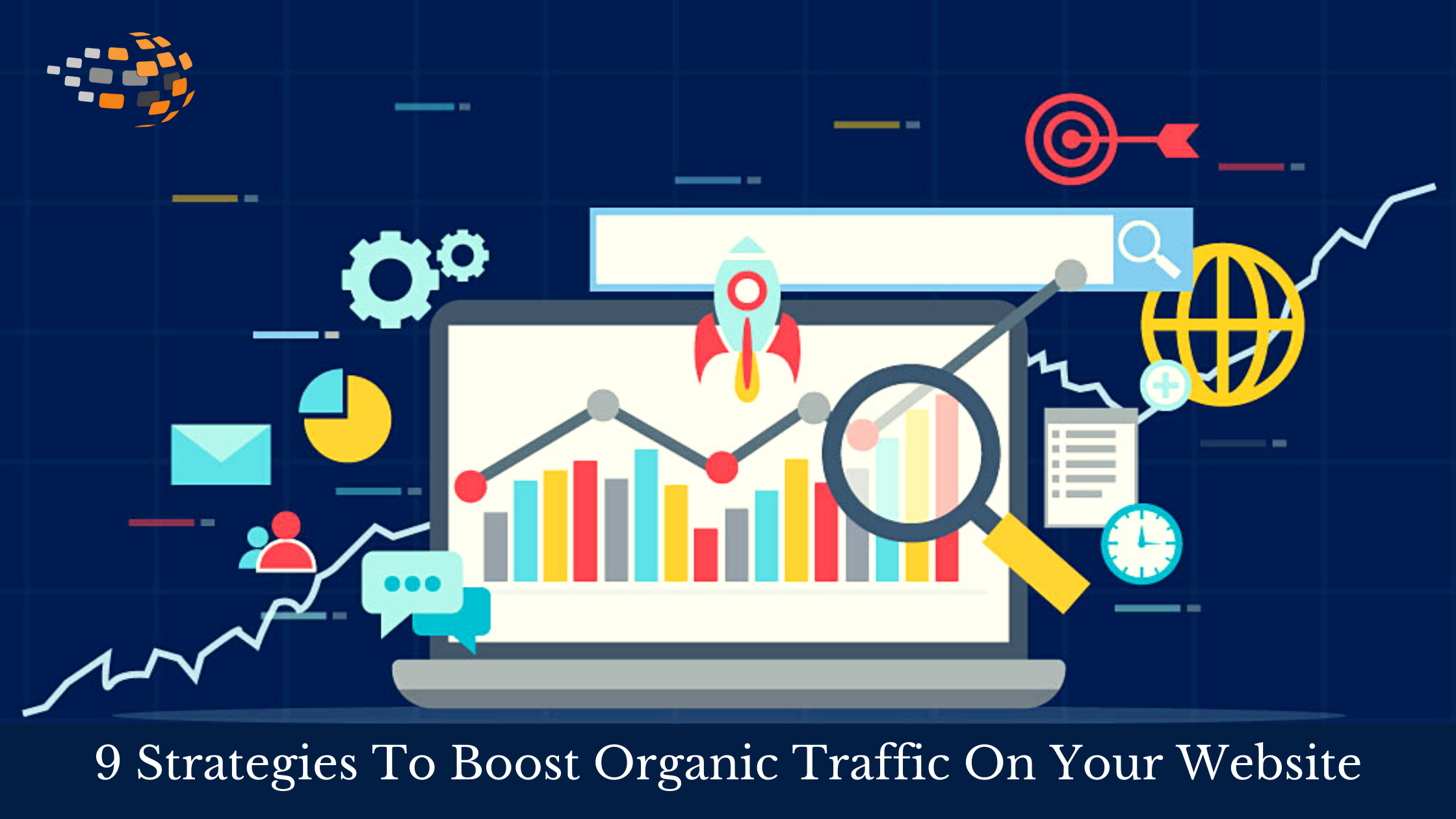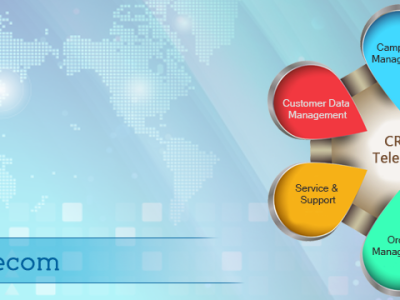
9 Strategies to Boost Organic Traffic on Your Website

Organic traffic means the traffic that you get without making any further efforts for paid marketing. This is usually generated by the content that you have on your website. Organic search drives 51% of web traffic and 40% of revenue. That is why you should continually aim to generate more search traffic.
To boost traffic to your website and increase business sales, you have to make sure that you use proper SEO (search engine optimization) techniques which maximizes the number of visitors to your site by ensuring that it appears high on the list of search engine results.
Website traffic is an important indicator of business growth. It can help you to:
- See how well your marketing is working
- Collect insights about your audience to make decisions
- Improve your SEO and search engine credibility
- Create more leads, increase conversions, and get more customers
Yet achieving these benefits requires driving traffic to your website in the right way, and a focus on driving quality traffic. In this post, we’ll cover 9 effective organic ways to drive traffic to your website in a way that impacts your bottom line.
1. Understand your target audience
First and foremost, you must know to whom you’re addressing your content. The key to organic SEO is creating informative and high-quality content that resonates with your ideal buyer. You must understand your audience, the issues they want to resolve, the keywords they use in search queries, and the things they are interested in seeing in a brand and product.
Your primary target audience will typically get most of your attention, as you expect them to become your most valuable group of customers. As a marketer, you should know everything about your target audience from their demographics and interests to their buying behaviors.
You might be wondering where you can find information that can guide you in the right direction. We’re here to help detail some of the essentials when it comes to understanding your target audience.
- Keyword Research
- Contact your leads and customers every day.
- Internet forums are a great place for you to learn about what your target audience wants to know.
- Social media
2. Research Your Competitors’ SEO and Content Strategies for Inspiration
Is your competitor’s website more engaging, helpful, or visually appealing than your own? Does the website have more authority than yours? While researching your competitor’s website, ask yourself an important question: What makes this website better than my own?
Identify areas where they are falling behind and where they are further ahead than you — pay particular attention to the link structure of their website, the quality of content on their pages, and the way that their key propositions are marketed. This should allow you to draw some conclusions about their SEO and content priorities and the work they’ve undertaken to achieve their current success.
Also, have a look into your competitor’s backlink profile and see where they’re getting their links from.
Researching these backlinks will also give you insight into which landing pages on your competitor’s website are the most successful traffic drivers. Take a look at these pages — are they sales-driven? Use this insight to understand the sort of content your target audience and wider sector are hungry for and actively consuming — then let this insight fuel your content strategy and act as a starting point for potential content campaigns and partnerships down the line.
It isn’t impossible to catch up with competitors like this and build a strong backlink profile that will improve your rankings.
3. Create the Best Content Possible for User Intent
User Intent simply suggests the purpose of a user behind any search.
Your business website is a digital representation of your business. For many of your potential customers, your website may be the first impression they get of your brand or services.
If your content doesn’t match it, Google will rank you down. In other words, we can say if your content isn’t providing them what they are looking for, it’ll create a bad user experience.
And Google has numerous algorithms to identify a bad user experience and once it does that, it’ll crawl your site down and make you vanish among the millions of URLs on the internet.
Quality content ranks better on SERPs, which in turn drives more organic traffic. It is also the type of content that will make the readers say “Yes! That’s what I wanted to read!” and share it with other prospects.
So, give content your best shot, before you publish it. Tips to produce content for User Intent:
- Create a Content Marketing strategy based on your audience and niche to produce relevant content.
- Stick to the topic or link that dragged the user towards your page.
- Identify your audience’s search intent and create a complete plan according to that.
- Generate high-quality content to satisfy user intent.
4. Improve Your Website’s Usability and Technical SEO
Your website’s usability refers to how easy it is for someone to use and navigate. Google and other search engines reward websites that are fast, accessible, and well put-together while mostly ignoring sites that are slow to load, confusing to navigate, or problematic for users. Typically, you want to provide a highly usable website that makes taking action as easy as possible.
Often, usability improvements to your website also result to be technical SEO improvements because what’s good for your users is good for your search engine rankings. This provides an extensive technical SEO checklist to help you identify areas of improvement, our list of improvements is as below.
- Ensure your site is optimized for all screen sizes
- Reduce page loading times
- Find and fix any 404 pages
- Find and replace any 301 redirects
- Improve your internal linking
- Remove keyword Stuffing
- Improve your metadata
- Add schema markup to your content
Sometimes, the best way to make sure that all of your technical SEO concerns are addressed for top rankings and succeed in increasing organic traffic.
5. Target Keywords with High CPC
Cost-Per-Click (CPC) is the amount advertisers are investing for each click in PPC campaigns. High CPC means the investors are paying a high amount for that keyword and want to lure genuine users.
Targeting High CPC keywords will present your content in front of the audience who are interested in it and want to read it. Believe me, if a user is desperate to read on a topic, he/she scrolls to the bottom of the blog to grasp the complete knowledge.
Tips to target high CPC keywords:
- Target keywords that are related to your niche.
- Use SEO tools to find the best keywords.
- Use long-tail keywords to increase the chances of ranking on more specific searches.
This can reduce your bounce rate and increase the average time on site too which will rank you better and get you more traffic.
6. Create a powerful internal linking system
Internal linking is including your own website’s links in your content. This action helps generate more traffic; the search engine will notice the same user was on a couple of different website pages and Google will rank your website higher.
Internal linking also helps Google get to know your website better and how to rank your website.
To build your credibility online, you need to have the content to back it up. Once you’ve built up a decent back catalogue of content, you can link to it in blogs and on your website, guiding visitors to more relevant content. This can keep visitors on your website for longer, which helps boost your search rankings. For example:
When visitors like one blog post, they might want to read more of your work. So, having an internal link to another post can extend the conversation, as well as the time your visitors spend on your website. But before building links on your content, you should remember a few things.
- Apply links on the descriptive text to make the user understand which page he will be redirected on after clicking the link.
- Data you’re using as a source should be recent.
- The site you’re linking your content has to be a credible source.
Once you’ve built up a decent back catalogue of content, you can link to it in blogs and on your website, guiding visitors to more relevant content. This can keep visitors on your website for longer, which helps boost your search rankings.
7. Utilise Social Media
Now that you have a website filled with high-quality content, an interesting blog to share, and a developed website filled with long-tail keywords, it’s time to promote your business and blog posts using social media platforms!
Social media and website marketing go hand-in-hand. If you’re trying to increase your general website traffic or trying to promote a landing page, entice your social media followers to visit your website.
For better results, use an image. For example, if you’re launching a limited-edition product, attach an image of the product with the description and the website link to purchase the product.
Social media is also a great place to promote your blog, post-sales, and other techniques that will help to increase traffic to your website. You can use social media to drive a lot of traffic to your website. It’s all about using the right channels, sharing the right content, and sending out the right message.
8. Guest Blogging
One of the ways your blog can rank on search engines is by supplying other blogs with your links so they can externally link to your blog. It lets you go into more depth than your website allows and creates a large catalogue of helpful, persona-optimized content centred on your market niche.
When search engines crawl that blog and see your URL, that tells Google you’re an influential website and they will rank your content better.
The inbound link you get at the end of a guest post exposes your content to a new audience.
Publishing your blog post on a high authority site surely helps you build organic traffic. Some of the best tips for guest posting are:
- Don’t post on every other website. Keep the quality of your content high, and aim for the major sites that generate a decent amount of traffic.
- Guest blogging on websites that are in the same business industry as yours. Remember that you are trying to reach your ideal audience.
- Promote your guest posts as if they are your own. This displays your seriousness and gratitude towards the other website where you posted the guest blog.
Just posting isn’t enough. Check your guest post regularly and respond to the comments. You want their visitors to be your visitors; returning to the readers is a great way to build a relationship.
9. Start Email Marketing
Sending out regular newsletters and promoting offers through email is an excellent way to stay in touch with your customers and can also help to get traffic to your website. Provide valuable information and links to pages on your website where they can learn more, such as through blog posts and landing pages for particular offers. Just make sure that you don’t continually barrage your readers with emails or your customers will either disengage with, delete, or unsubscribe from your emails.
Also, put particular thought and compelling strong text into your email subject lines. These heavily influence whether or not a user opens your email. If your emails never get opened, you can’t receive traffic to your site! So, here are some incentives you could use to entice people to join your email list:
- Compelling content
- First-order discounts
- Free or express shipping upgrade
End-of-post opt-ins are a great place to grab subscribers in a space where brands otherwise rarely include a call-to-action other than telling readers to comment and share. Alternately, include a visual call to action with your newsletter opt-in.
Conclusion
The tips shared in this post can increase your search engine rankings, help your website generate the organic traffic you desire, and give you a way to genuinely connect with your customers online. Want some expert advice on how to fix your website’s issues and gain more traffic and conversions? Contact us to get the right visitors coming to your site and more importantly, more of those visitors converting into customers.



